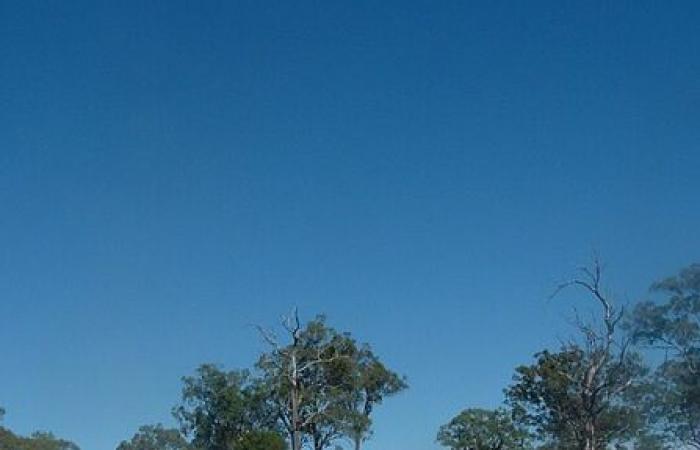In the heart of Australia, in the state of New South Wales, lies a fascinating and little-known natural phenomenon: the eternal fire of Mountain Wingen, also known as the Burning Mountain. This underground fire, which has been burning for thousands of years, is a geological enigma and natural wonder that attracts scientists and tourists.
Origin and Location of Burning Mountain
Mountain Wingen, which means “fire” in the language of local Aboriginal people, is located about 300 kilometers north of Sydney. The region is known for its mountainous landscape and unique flora and fauna, but what really stands out is the underground fire that burns about 30 meters below the surface.
This underground fire is the oldest known in the world, with estimates suggesting it has been burning for at least 6,000 years. Unlike visible wildfires, the Mountain Wingen fire burns an underground coal seam, moving slowly through the coal deposits at a rate of about one meter per year.
The Science Behind the Eternal Fire
The Mountain Wingen fire is fueled by the combustion of coal underground. This phenomenon occurs when charcoal comes into contact with oxygen, starting a chemical reaction that produces heat and, eventually, fire. Although these types of fires can be caused by human activity, such as mining, the Burning Mountain fire is believed to have started naturally, possibly due to lightning that ignited an exposed coal seam on the surface.
(Photo: Wikimedia Commons)
Underground combustion generates extremely high temperatures, which can exceed 1,000 degrees Celsius. These high temperatures break down minerals and release toxic gases, including carbon dioxide and methane, which seep to the surface, affecting vegetation and air quality in the surrounding area.
Environmental and Cultural Impact
The eternal fire of Mountain Wingen has a significant impact on both the environment and local culture. From an ecological point of view, the heat and gases released by the underground fire have altered the landscape, creating sterile areas where vegetation cannot grow. However, some plants and animals have adapted their habits to survive in this unique environment.
Culturally, the Mountain Wingen fire is an integral part of Aboriginal folklore. Local indigenous communities, the Wonnarua, have told stories about fire for generations, considering it a manifestation of their land and a symbol of the resilience and power of nature. These stories have been instrumental in keeping the history and cultural identity of the Wonnarua alive.
Research and Tourism
Burning Mountain has attracted the attention of scientists around the world, who are studying the phenomenon to better understand the geological processes and environmental impacts of underground fires. These investigations not only help unravel the mysteries of Mountain Wingen, but also provide valuable information for managing other similar underground fires in different parts of the world.
Additionally, the site has become a popular tourist attraction. Visitors can follow well-marked trails that lead to viewing points from which areas affected by the underground fire can be observed. Information panels along the trail offer a detailed look at the geology, ecology and cultural history of Burning Mountain, providing an educational and enriching experience.
References:
- Hiller, V., et al. (2015). “Combustion of underground coal seams: Fire phenomena and burning characteristics.” International Journal of Coal Geology152, 14-21.
- Stedman, A. (2012). “The Burning Mountain: Exploring Australia’s Longest Burning Coal Seam Fire.” Australian Geographic109, 45-51.
- Jones, A., et al. (2019). “The environmental impact of underground coal fires.” Journal of Environmental Management231, 100-107.






